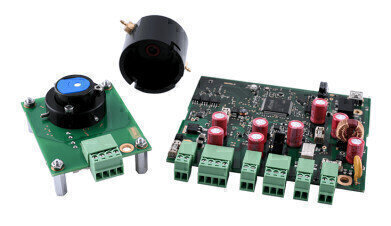Gas Detection
50% discount on highly effective tool for sensor evaluation
Jun 24 2020
Until 24 August 2020, Ion Science is offering 50% discount on its high performance Sensor Development Kit (SDK). Quote ‘SDK50’ when ordering to receive discount.
The SDK has been designed to allow simple and cost-effective evaluation of Ion Science’s sensor range for any application and to allow rapid integration into existing or new systems.
Its integration capabilities are aimed at OEMs and systems integrators within a diverse range of industries including HVAC, agricultural and general manufacturing industries. Comprising integration and sensor PCBs, the SDK allows OEMs to add Ion Science MiniPID technology for a relatively low investment cost which reduces expenditure on development programmes.
Due to its small size and number of interfaces, Ion Science’s SDK enables OEMs to easily incorporate MiniPID technology into systems and applications that require the sensitivity of photoionisation detectors (PIDs) but without significant investment in engineering and R&D.
A low cost alternative to fixed and portable gas detection systems, the SDK is supplied ready for immediate integration. The MiniPID sensor and integration boards handle the intricacies of PIDs which reduces the need for design and development.
Coupled with Ion Science’s MiniPID technology, the SDK provides highly accurate data in real time. Plus it offers industry standard protocols and interfaces for seamless connectivity.
The integration board provides data logging as well as flexible 4-20mA and Modbus RTU output for connection to PLCs, building management systems (BMS) and other equipment for rapid prototyping and product development. It also has a 4 – 20 input to allow integration of additional sensors.
Although suitable for a wide variety of target markets, there is growing demand for VOC monitoring from the HVAC industry with BMS manufacturers increasingly likely to integrate it into systems for checking room pollution levels.
In most modern commercial buildings, there are relatively few indoor sources of inorganic gaseous pollutants and the primary indoor generated airborne pollutants affected by ventilation are particles and VOCs.
The existing particle filters in building HVAC systems remove indoor generated particles using far less energy than ventilation. To complement particle filtration, effective and energy efficient air cleaning methods are needed for VOCs.
Digital Edition
IET 34.2 March 2024
April 2024
Gas Detection - Biogas batch fermentation system for laboratory use with automatic gas analysis in real time Water/Wastewater - Upcycling sensors for sustainable nature management - Prist...
View all digital editions
Events
Apr 30 2024 Melbourne, Australia
Apr 30 2024 Birmingham, UK
May 03 2024 Seoul, South Korea
May 05 2024 Seville, Spain
May 06 2024 Minneapolis, MN, USA


















